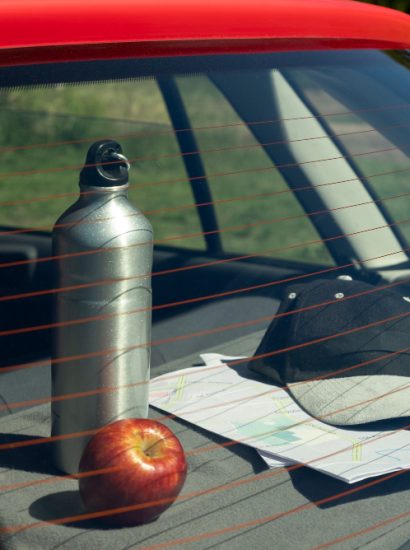A DOT audit is an official review conducted by the Department of Transportation (DOT) to ensure commercial motor carriers are complying with all applicable FMCSA regulations. If you operate commercial vehicles, understanding the DOT audit process is critical to avoid fines, penalties, and possible suspension of your operating authority.
Whether you’re a new entrant or a seasoned trucking company, this guide breaks down the types of DOT audits, checklists, requirements, and how to prepare in 2025.
Why Are DOT Audits Important?
DOT audits serve two key purposes:
- Ensure Safety Compliance – To reduce the risk of crashes and keep roads safer for the public.
- Enforce Federal Regulations – To make sure carriers adhere to FMCSA rules for operations, maintenance, and driver management.
Failing a DOT audit can lead to:
- Out-of-service orders
- Hefty fines
- Loss of your USDOT number
- Revocation of your operating authority
Types of DOT Audits
There are several types of audits, each with different triggers and procedures:
New Entrant Safety Audit
Required within the first 12 months of receiving a USDOT number. It’s designed to educate and evaluate new carriers.
Compliance Review (CR)
A thorough investigation if there are red flags such as:
- High crash rates
- Poor roadside inspection scores
- Safety complaints
Focused Audit
Targets a specific area of concern—like Hours of Service (HOS) violations or drug testing policies.
Security Audit
For carriers transporting hazardous materials, this ensures compliance with HM-232 regulations.
Terminal Audit
Conducted at the carrier’s terminal, this involves a comprehensive inspection of maintenance, safety procedures, and logbooks.
DOT Audit Checklist: What Inspectors Look For
To pass a DOT audit, carriers must maintain accurate, up-to-date records. Here’s a comprehensive checklist:
Driver Qualification Files (DQF)
- Valid CDL copies
- Employment application
- Background checks
- Medical examiner certificates
- Road test results
Hours of Service (HOS)
- Accurate ELD records or paper logs
- Supporting documents (fuel, tolls, receipts)
- Records of duty status for 6 months
Drug & Alcohol Testing Program
- Random testing records
- Pre-employment drug test results
- Proof of enrollment in a DOT-compliant consortium
- MIS reports
Vehicle Maintenance Records
- Daily Vehicle Inspection Reports (DVIRs)
- Repair logs
- Annual DOT inspection certificates
Accident Register
- A 3-year record of all DOT-reportable crashes
- Documentation of corrective action
Insurance & Authority
- Copy of valid MCS-90 form
- Proof of minimum coverage ($750,000–$5M)
- Operating authority documents
Hazmat Compliance (if applicable)
- Training certifications
- Shipping papers
- HM-126F and HM-232 compliance
How to Prepare for a DOT Audit in 2025
To stay compliant and ready for inspection at any time:
Maintain Organized Records
Use digital file management or software to store documents. Label and timestamp everything.
Conduct Internal Safety Audits
Schedule regular self-audits to identify non-compliance issues early.
Train Your Drivers
Educate drivers on proper logging, pre-trip inspections, and roadside inspection procedures.
Use DOT-Compliant ELD Systems
Choose an FMCSA-approved ELD to avoid automatic violations.
Join a Consortium for Drug Testing
Make sure you’re part of a certified third-party consortium if you’re an owner-operator.
Keep DVIRs Up to Date
Ensure drivers perform and document pre- and post-trip inspections daily.
Know Your CSA Score
Stay under the threshold by reviewing your Compliance, Safety, Accountability (CSA) score monthly.
What Happens During a DOT Audit?
Step-by-Step Process:
- Notice of Audit: You’ll receive a letter or call from a DOT auditor.
- Document Submission: You may need to send files electronically or prepare for an onsite visit.
- Interview: Auditors may speak with safety managers, mechanics, and drivers.
- Inspection: Review of driver logs, DQ files, drug program, and vehicle maintenance.
- Outcome: You’ll receive a written report. Outcomes include:
Satisfactory: You passed.
Conditional: You must fix issues.
Unsatisfactory: You may face penalties or shutdown.
What Triggers a DOT Audit?
Your company may be flagged for an audit due to:
- A high CSA score
- An accident
- Public complaints
- Failure to comply with random drug testing
- Irregular ELD logs
- Suspicion of falsified records
Being proactive is the best way to reduce risk.
Common DOT Audit Violations
Avoid these top violations that often lead to audit failures:
| Violation | Fine/Impact |
| No driver file for CDL holders | $1,300+ per driver |
| Missing drug/alcohol testing record | $10,000+ and disqualification |
| HOS violations/falsification | Up to $11,000 per offense |
| Vehicle maintenance neglect | Out-of-service orders |
| Lack of insurance documentation | Loss of authority |
How Long Does a DOT Audit Take?
- Off-site audits typically take 1–3 weeks.
- On-site audits may last 1–3 days depending on fleet size.
How to Pass a DOT Audit: Pro Tips
- Conduct quarterly internal audits
- Stay current on FMCSA rule updates
- Use fleet management software
- Designate a compliance manager
- Keep backups of critical documents
Conclusion
A DOT audit is a serious yet manageable part of operating a commercial trucking business. Staying compliant isn’t just about avoiding fines—it’s about protecting your business, your drivers, and the public. With the right preparation, systems, and training, passing a DOT audit in 2025 can be a straightforward process.
Invest in compliance management today to safeguard your authority tomorrow.
FAQs
1. What triggers a DOT audit?
DOT audits are triggered by poor CSA scores, accidents, complaints, or irregularities in logbooks or drug tests.
2. How often does the DOT audit trucking companies?
New entrants are audited within the first year. After that, frequency depends on compliance and performance.
3. What documents are required for a DOT audit?
You need DQ files, HOS logs, vehicle inspections, accident reports, insurance, and drug testing records.
4. Can I fail a DOT audit and still operate?
If marked as “Unsatisfactory,” your operating authority can be revoked until you correct the issues.
5. How do I prepare for a DOT audit as an owner-operator?
Keep records organized, join a drug testing consortium, maintain your truck, and log hours accurately.
Also read: How Many Biweekly Pay Periods in a Year? Everything You Need to Know









